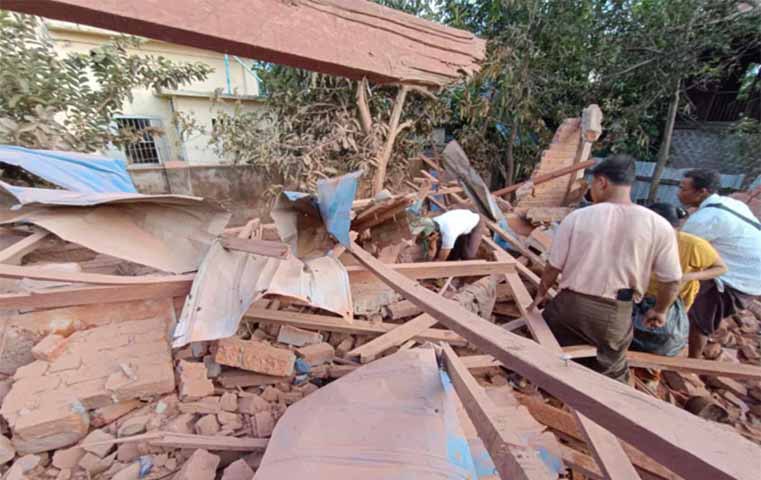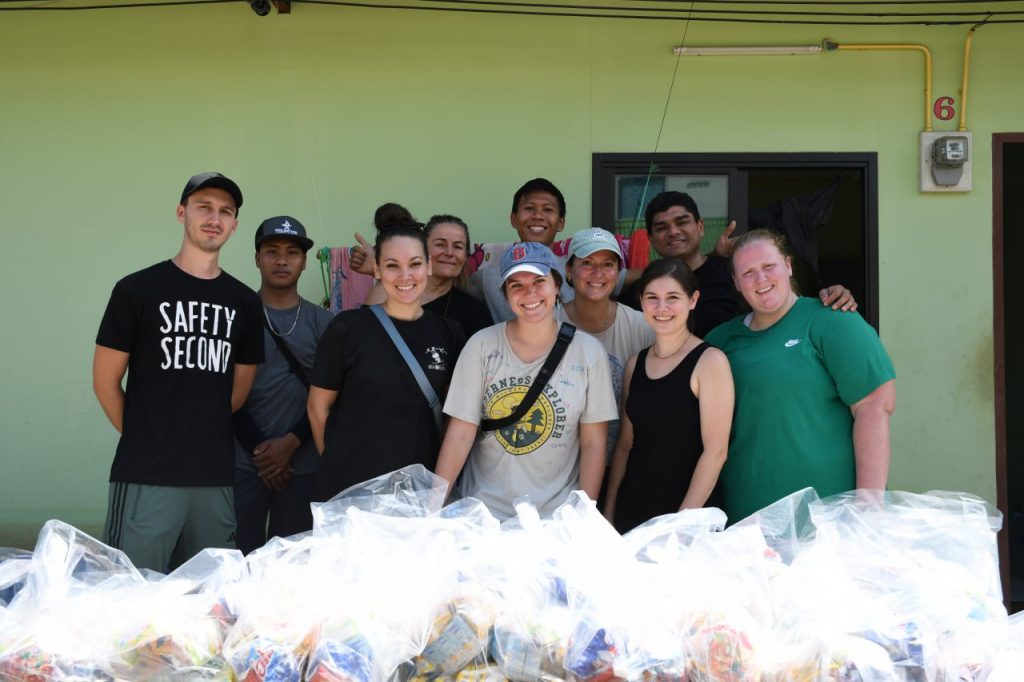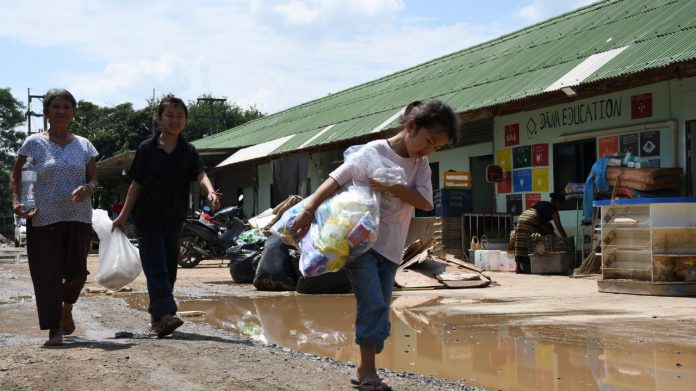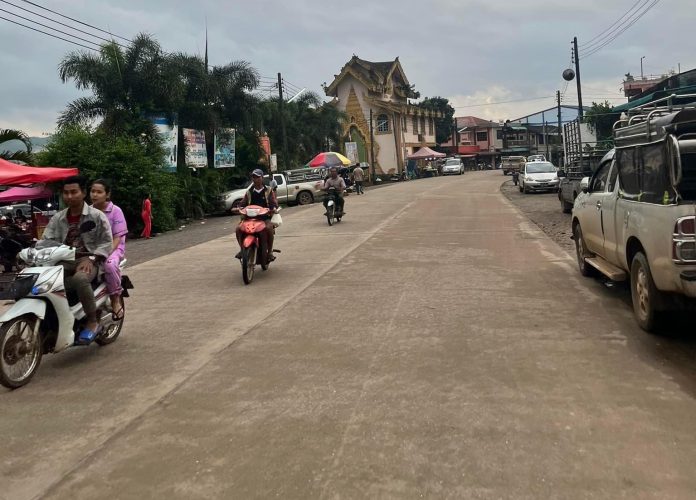Tun Lin Aung for Mekong Eye
Long-term changes in weather patterns are increasingly undermining the ancient buildings at the Bagan heritage site
Typhoon Yagi damaged some of the ancient buildings at the world-famous Bagan temple complex. However, experts say the damage was not done by a single event, but by the slow onset of extreme weather conditions.
In mid-September, Typhoon Yagi hit Myanmar and caused 60-year record rainfall in Myanmar’s ancient capital of Bagan in the Mandalay Region. Several 800-year-old Buddhist temples and pagodas partially or entirely collapsed.
Among them were the 12th-century Pagoda No. 167 and the 13th-century Pagoda No. 1042, known as Sinka Temple – a square-shaped, Bagan-style structure made of red brick.
Both temples are part of more than 3,000 ancient buildings in the UNESCO World Heritage Site, which had drawn many visitors to the country’s central Mandalay Region each year before the 2021 military coup and following civil unrest.
After the typhoon struck, some archaeologists rushed to the site to do an inspection and found that excessive water had seeped into the buildings’ walls, weakening the structures until they collapsed.
The damage to the ancient buildings was reported along with more than 220 deaths and 88 missing due to floods and landslides triggered by the remnants of Typhoon Yagi.
However, local experts say this was not a single destructive event in Bagan. Instead, it was the slow onset of events associated with the increasing frequency of extreme weather.
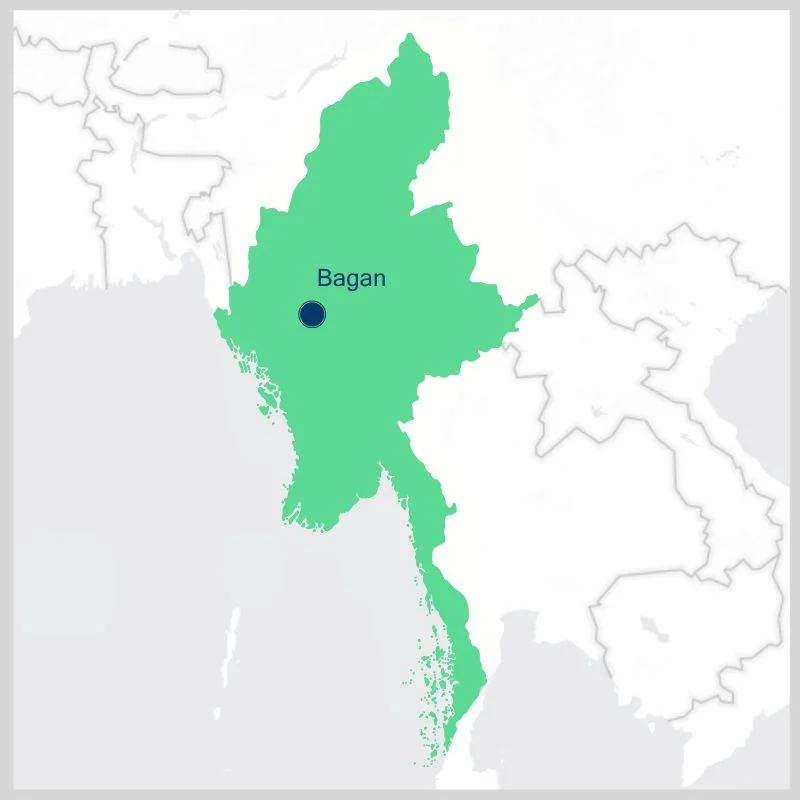
The ancient architecture of Bagan was created between the 9th and 13th centuries during the rule of the Pagan Kingdom, the first Burmese kingdom to unify the regions that would later become Myanmar.
Influenced by Theravada Buddhism, Pagan’s rulers built more than 10,000 monasteries, temples and pagodas at what is now the Bagan heritage site.
Some 3,837 survived, creating a unique landscape of red brick structures protruding from shrubland. Some are covered by white-painted plaster. Among these are 416 pagodas that host multi-color murals and are of high archaeological value.
“The reason Bagan’s ancient buildings have lasted for centuries is that they are located in Myanmar’s semi-arid Central Dry Zone that has a consistent dry climate,” said Kyaw Myo Win, the director at the Department of Archaeology and National Museum.
Many of Bagan’s historical buildings were built from clay bricks and mud that do not endure intense rain, but suit the local climate of annual long-month dry spells even during the monsoon.
Increasing torrential rain in the past decades have altered the local climate and harmed the building structures, added the director.

More floods and storms
Several studies predict that Myanmar’s Central Dry Zone will experience increased extreme weather events related to climate change.
This includes changes in precipitation patterns that cause more heavy rainfall and flooding, as well as more drought risks, making the area experience more complex and unpredictable climate trends.
Meteorologist Than Nyunt, a former staff member of Myanmar’s Department of Meteorology and Hydrology (DMH), said he has observed increasing floods and rain intensity in the Bagan area since 2011.
From 1994 to 2003, the DMH recorded only two incidences of torrential rain with daily rainfall exceeding 75 millimeters, an amount large enough to cause flooding or flash floods. The incidences increased to six from 2004 to 2013, and seven from 2014 to 2023.
The DMH data also shows that the total amount of rainfall in Bagan also increased by 20 percent when compared with the period of the 1990s and 2000s, although the number of rainy days declined – indicating the increased chance of extreme precipitation events.
The World Bank’s database shows devastating floods and storms have been reported in Myanmar mostly every year since 2005. The previous average was once every two to three years.
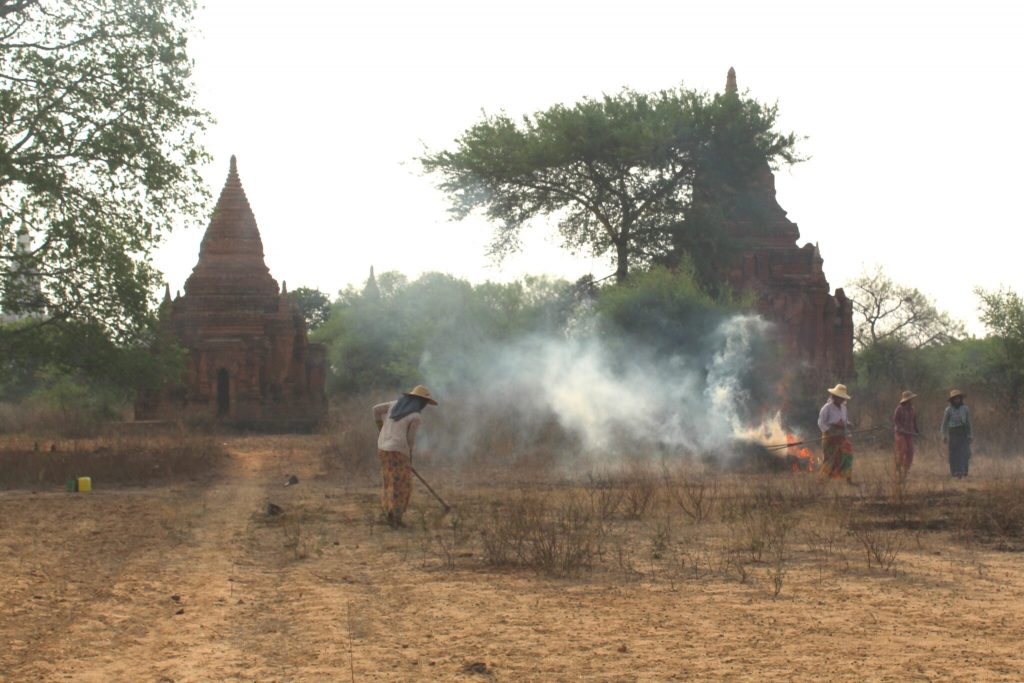
In May 2023, Cyclone Mocha – the most powerful storm ever – made landfall in Myanmar and killed more than 400 people. It also flooded many parts of the Bagan historical site and affected many ancient buildings and six murals.
“Our teams must work around the clock to protect the ancient buildings. We built roofs to cover some temples, and we saved them. But many collapsed,” said Win, a stonemason working on restoring ancient buildings in Bagan. “If such [a tropical storm] happens again, many buildings will not survive.”
His prediction was proved correct by the recent Typhoon Yagi.
Moisture breaks murals
Mural painting restorer Tun Naing pointed to a white spot on the surface of the red-brick ceiling inside Ywar Haung Gyi, an old temple on Anawrahta Road in Bagan.
The white spot indicates where water seeps through the building, creating cracks in the bricks and harming wall murals and inscriptions depicting Buddha’s enlightenment.
“These murals are extremely vulnerable to water. When exposed to water and moisture, the paint turns white, and no technology can restore it to the original,” Tun Naing explained.
Many pagodas from the early 11th and 12th centuries in Bagan host wall murals that used paints made from plaster, while those from the 13th century and later were painted with earth pigments.
Both are sensitive to moisture, and excessive water and humidity has already caused them to swell and sections have peeled off the walls, said the mural restorer.

Myanmar’s Agricultural Statistics show that the annual mean relative humidity in the Bagan area increased from over 50 percent to more than 70 percent between 2014 and 2023. The higher percentage makes it less likely that water can evaporate into the air, causing it to be trapped inside the building’s structure.
Various factors may contribute to this increase, but heavy and prolonged periods of rain can significantly raise moisture levels by saturating the ground and the surrounding environment.
This moisture can seep into walls, ceilings and other surfaces, making it difficult for the water to evaporate.
The result is increased moisture retention, which can damage murals, cause cracks in bricks and lead to the growth of moss or mold, particularly in areas like Bagan’s ancient temples that are sensitive to water damage.
“This year, what is particularly notable is the increased growth of moss on the temples,” observed Myint Naing from Future Bagan, a civil society organization focusing on conservation.
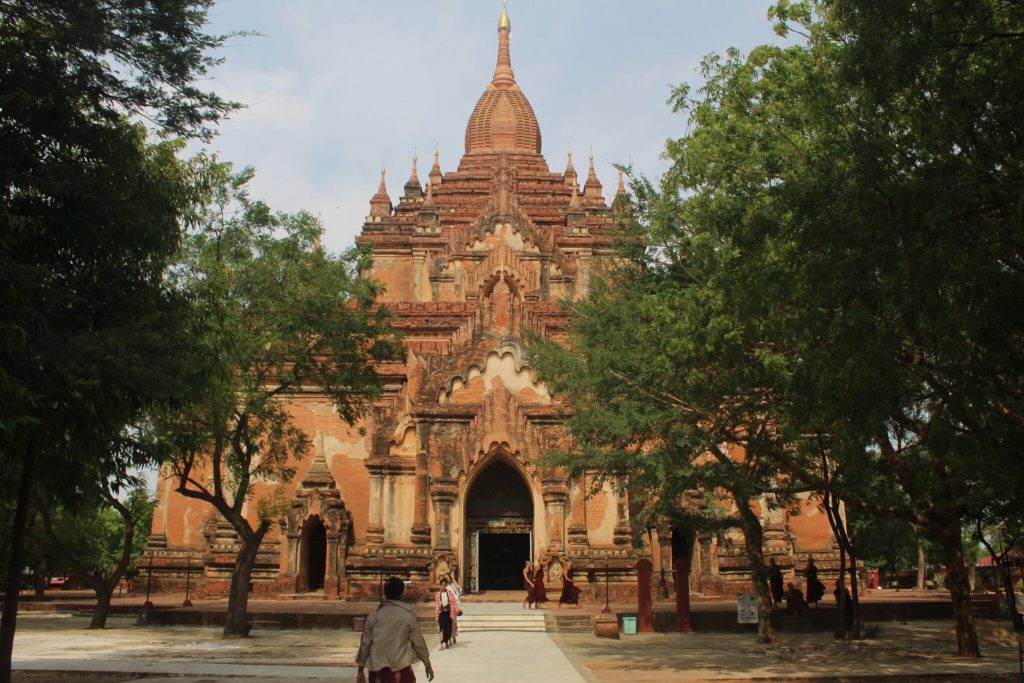
Finding ancient ponds
As floods become more frequent, Myanmar authorities are working on solutions to prevent future flooding, in collaboration with UNESCO and academic institutes.
One of these strategies is to locate and restore ancient ponds to help contain floodwater. Many of these ponds have become shallow due to sediment buildup and need to be dredged to restore their functionality for modern use.
During the 2024 fiscal year, the Department of Archaeology and National Museums surveyed the Bagan area and found about 106 ponds, ranging in size from two to four hectares.
“After Cyclone Mocha, we investigated the reasons for flooding in many temple areas and found that they lacked proper drainage. We are working with UNESCO to address this issue and the challenges posed by climate change,” said director Kyaw Myo Win.
He added that his department had been conducting Heritage Impact Assessments to evaluate the impact of converting these ponds into flood containment areas. These ponds will not only help tackle flooding, but also provide water sources for residents.
The first phase began this year, with plans to improve 46 ponds. The remainder will be addressed in the following phases.
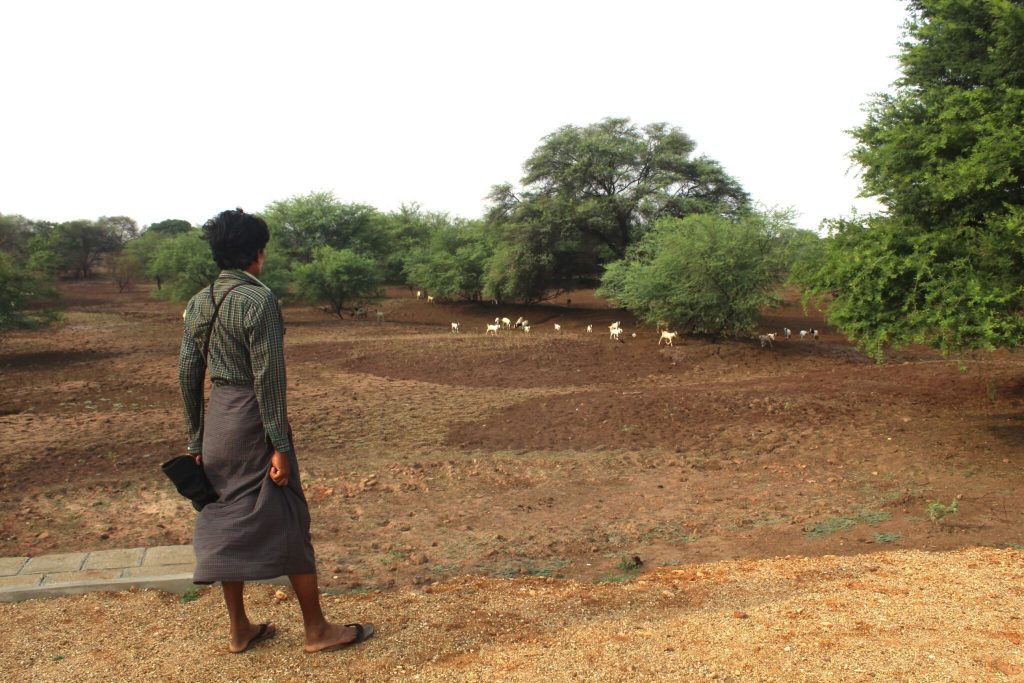
Despite this progress, support for the preservation and restoration of historical sites has decreased due to the political instability in Myanmar, which has hindered academic cooperation, reduced international funding contributions and disrupted the movements of civil society organizations.
“Preserving ancient buildings is like caring for the elderly. It requires diligent support from all sides, especially local people and organizations which have become weak due to the current situation,” said Myint Naing.
“It’s better to prevent deterioration before it leads to collapse than to repair the damage afterward.”
This story was published by Mekong Eye with the support of Internews’ Earth Journalism Network. It was first published in Burmese by Eleven Media Group.




